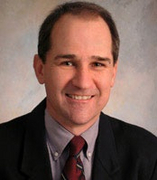Even though anorexia nervosa (AN) was first recognized more than 125 years ago, this disorder still bewilders patients and their families and perplexes clinicians and researchers. Our understanding of the medical features of AN has advanced, increasing our success at weight restoration in specialist inpatient settings.
Inpatient and day hospital treatments are generally effective in weight restoration, however, they are disruptive to the adolescentʼs family, social and educational life, and relapse is common.
Moreover, weight restoration alone is not sufficient for recovery. The Maudsley family-based outpatient treatment for AN is a promising alternative model to costly inpatient or day hospital programs. This model, which strives to bring about weight restoration and restore the adolescentʼs developmental trajectory, is explored in this article.
Research into treatment of anorexia in adolescents
Few controlled clinical trials have been conducted to explore efficacious outpatient treatments for adolescents with anorexia (1). While research has not been extensive, recent published reports of the treatment for adolescent AN have been more encouraging.
This handful of treatment trials (2) all investigated a particular type of family-based treatment which is designed to:
Prevent hospitalization of the adolescent by assisting the parents in their efforts to help their adolescent in his/her recovery from AN, and; to return him/her to normal adolescent development unencumbered by the eating disorder. This treatment was conceived by a team of child and adolescent psychiatrists and psychologists at the Maudsley Hospital in London and has come to be known as the Maudsley Approach or Family-based Treatment (FBT) for AN.
These studies have all demonstrated the efficacy of this treatment – that is, approximately two thirds of adolescent AN patients are recovered at the end of FBT while 75 - 90% are fully weight recovered at five-year followup(3). Similar improvements in terms of psychological factors were also noted for these patients. Clinical and research endeavors by The University of Chicago and Stanford University have shown promising results in their FBT studies, which are comparable to the positive outcomes that were initially established in the Maudsley studies. These researchers have shown that most young patients with AN require on average no more than 20 treatment sessions over the course of 6-12 months, and that about 80% of patients are weight restored with a start or resumption of menses at the conclusion of treatment(4).
The Maudsley Approach
The Maudsley approach can mostly be construed as an intensive outpatient treatment where parents play an active and positive role in order to: Help restore their childʼs weight to normal levels expected given their adolescentʼs age and height; hand the control over eating back to the adolescent, and; encourage normal adolescent development through an in-depth discussion of these crucial developmental issues as they pertain to their child.
More ʻtraditionalʼ treatment of AN suggests that the clinicianʼs efforts should be individually based. Strict adherents to the perspective of only individual treatment will insist that the participation of parents, whatever the format, is at best unnecessary, but worse still interference in the recovery process. In fact, many proponents of this approach would consider ʻfamily problemsʼ as part of the etiology of the AN. No doubt, this view might contribute to parents feeling themselves to blame for their childʼs illness.
The Maudsley Approach opposes the notion that families are pathological or should be blamed for the development of AN. On the contrary, the Maudsley Approach considers the parents as a resource and essential in successful treatment for AN.
Phase I: Weight restoration
The Maudsley Approach proceeds through three clearly defined phases, and is usually conducted within 15-20 treatment sessions over a period of about 12 months. In Phase I, also referred to as the weight restoration phase, the therapist focuses on the dangers of severe malnutrition associated with AN, such as hypothermia, growth hormone changes, cardiac dysfunction, and cognitive and emotional changes to name but a few, assessing the familyʼs typical interaction pattern and eating habits, and assisting parents in re-feeding their daughter or son. The therapist will make every effort to help the parents in their joint attempt to restore their adolescentʼs weight. At the same time, the therapist will endeavor to align the patient with her/his siblings. A family meal is typically conducted during
this phase, which serves at least two functions:
It allows the therapist to observe the familyʼs typical interaction patterns around eating, and it provides the therapist with an opportunity to assist the parents in their endeavor to encourage their adolescent to eat a little more than she was prepared to.
The way in which the parents go about this difficult but delicate task does not differ much in terms of the key principles and steps that a competent inpatient nursing team would follow. That is, an expression of sympathy and understanding by the parents with their adolescentʼs predicament of being ambivalent about this debilitating eating disorder, while at the same time being verbally persistent in their expectation that starvation is not an option. Most of this first phase of treatment is taken up by coaching the parents toward success in the weight restoration of their offspring, expressing support and empathy toward the adolescent given her dire predicament of entanglement with the illness, and realigning her with her siblings and peers. Realignment with oneʼs siblings or peers means helping the adolescent to form stronger and more age appropriate relationships as opposed to being ʻtaken upʼ into a parental relationship.
Throughout, the role of the therapist is to model to the parents an uncritical stance toward the adolescent – the Maudsley Approach adheres to the tenet that the adolescent is not to blame for the challenging eating disorder behaviors, but rather that these symptoms are mostly outside of the adolescentʼs control (externalizing the illness). At no point should this phase of treatment be interpreted as a ʻgreen lightʼ for parents to be critical of their child. Quite the contrary, the therapist will work hard to address any parental criticism or hostility toward the adolescent.
Phase II: Returning control over eating to the adolescent
The patientʼs acceptance of parental demand for increased food intake, steady weight gain, as well as a change in the mood of the family (i.e., relief at having taken charge of the eating disorder), all signal the start of Phase II of treatment.
This phase of treatment focuses on encouraging the parents to help their child to take more control over eating once again. The therapist advises the parents to accept that the main task here is the return of their child to physical health, and that this now happens mostly in a way that is in keeping with their childʼs age and their parenting style. Although symptoms remain central in the discussions between the therapist and the family, weight gain with minimum tension is encouraged. In addition, all other general family relationship issues or difficulties in terms of day-to-day adolescent or parenting concerns that the family has had to postpone can now be brought forward for review. This, however, occurs only in relationship to the effect these issues have on the parents in their task of assuring steady weight gain. For example, the patient may want to go out with her friends to have dinner and a movie. However, while the parents are still unsure whether their child would eat entirely on her own accord, she might be required to have dinner with her parents and then be allowed to join friends for a movie.
Phase III: Establishing healthy adolescent identity
Phase III is initiated when the adolescent is able to maintain weight above 95% of ideal weight on her/his own and self-starvation has abated.
Treatment focus starts to shift to the impact AN has had on the individual establishing a healthy adolescent identity. This entails a review of central issues of adolescence and includes supporting increased personal autonomy for the adolescent, the development of appropriate parental boundaries, as well as the need for the parents to reorganize their life together after their childrenʼs prospective departure.
Sites that practice the Maudsley Approach
In addition to the Maudsley Hospital and other centers in London, this family-based approach to treatment is implemented by programs in the United States, including Columbia University and Mt. Sinai School of Medicine, New York, NY, Duke University, Durham, NC, The University of Chicago, Chicago, IL, Stanford University, Stanford, CA, and the University of California at San Diego, CA. Dissemination of the Maudsley Approach has also been successful in Canada, e.g., Eastern Ontario Childrenʼs Hospital in Ottawa, North York General Hospital and the Hospital for Sick Children in Toronto, and McMaster University in Hamilton, ON. Adolescent eating disorders program at the Westmead Childrenʼs Hospital in Sydney, and the eating disorders program at the Royal Childrenʼs Hospital in Melbourne, Australia, have well established FBT programs.
The promise of the Maudsley Approach
In summary, the Maudsley Approach holds great promise for most adolescents who have been ill for a relatively short period of time (i.e., less than 3 years). This family-based treatment can prevent hospitalization and assist the adolescent in her/his recovery, provided that parents are seen as a resource and that they are allowed to play an active role in treatment. A detailed clinicianʼs manual that spells out how parents should be involved in this treatment approach has recently been developed (5). These authors have also published a parent handbook that clearly spells out the positive role that parents can play in their childʼs recovery (6) as well as a parent case book which chronicles the experience of ten families as they undertake FBT (7). Drs. Le Grange and Lock have founded the Training Institute for Child and Adolescent Eating Disorders as a vehicle to conduct regular workshops for clinicians who wish to become certified FBT therapists (www.train2treat4ed.com)
For further information:
Dr. Le Grange, Department of Psychiatry, University of Chicago; Director of the Eating Disorders Program, Chicago.
[email protected], or www.eatingdisorders.uchicago.edu;
Dr. James Lock Department of Psychiatry, Stanford University School of Medicine; Director of the Adolescent Eating Disorders Program, Lucille Packard Childrenʼs Hospital, Stanford.
[email protected]
References
(1) Le Grange, D., and J. Lock. 2005. The dearth of psychological treatment studies for anorexia nervosa. International Journal of Eating Disorders, 37, 2005, 79-91. Le Grange, D., and Eisler, I. Family interventions in adolescent anorexia nervosa. Child and Adolescent Psychiatric Clinics of North America, 2009, 18, 159-173.
(2) Eisler, I., Dare, C., Hodes, M., Russell, G., Dodge, E., and D. Le Grange. 2000. Family therapy for adolescent anorexia nervosa: the results of a controlled comparison of two family interventions. Journal of Child Psychology and Psychiatry, 41, 727-736.; Le Grange, D., Eisler, I., Dare, C., and G. Russell. 1992. Evaluation of family treatments in adolescent anorexia nervosa: a pilot study. International Journal of Eating Disorders, 12, 347-357.; Russell, G. F. M., Szmukler, G.I., Dare, C., and I. Eisler. 1987. Family therapy versus individual therapy for adolescent females with anorexia nervosa and bulimia nervosa. Archives of General Psychiatry, 44, 1047-1056.
(3) Eisler, I., Dare, C., Russell, G. F. M., Szmukler, G. I., Le Grange, D., and E. Dodge. 1997. Family and individual therapy in anorexia nervosa: A five-year follow-up. Archives of General Psychiatry, 54, 1025-1030.
(4) Le Grange, D., Binford, R., and K.L. Loeb. 2005. Manualized family-based treatment for anorexia nervosa: A case series. Journal of the American Academy of Child and Adolescent Psychiatry, 44, 41-46.; Lock, J., Agras, W.S., Bryson, S., and H. Kraemer. 2005. A comparison of short- and long-term family therapy for adolescent anorexia nervosa. Journal of the American Academy of Child and Adolescent Psychiatry, 44, 632-639.
(5) Lock, J., Le Grange, D., Agras, W. S., C. Dare. 2001. Treatment manual for anorexia nervosa: A family-based approach. New York: Guildford Publications, Inc.
(6) Lock, J., and D. Le Grange. 2005. Help your teenager beat an eating disorder. New York: Guilford Press.
(7) Alexander, J., and Le Grange, D. My kid is back. Empowering parents to beat anorexia nervosa. Melbourne: Melbourne University Press, 2009.
For more information on family-based treatment visit maudsleyparents.org






Add a Comment5 Comments
Anorexia Nervosa is also the third most common chronic disease among teenage, specially women. There are also chances of death from this eating disorder.
February 10, 2011 - 11:07pmAnorexia Nervosa Eating Disorders
This Comment
Special thanks to EmpowHER writer Mary Sornberger for working with Maudsley Parents to post Dr. le Grange's article here. Family-based treatment for adolescent anorexia nervosa shows very promising results in studies. The approach has also been adapted for bulimia nervosa. http://maudsleyparents.org/bulimianervosa.html In addition, a recent case study at the University of Chicago used family-based treatment for young adults with AN. http://maudsleyparents.org/youngadults.html
February 21, 2010 - 1:04pmThis Comment
For any parents of anorexics who are reading this and who are not using Maudsley-I would like to tell you that an eating disorder is not your fault! And yes, it really works and yes, yes, you can do it! We used traditional treatment for 6 months and had 7 hospitalizations. Since starting Maudsley we have had none and we are in stage II-III. Good luck and google F.E.A.S.T. if you need more information and support!!!!!
February 21, 2010 - 11:38amThis Comment
This is such good news, and I am so glad that you are involved in such positive work to help families bring sufferers to recovery.
February 21, 2010 - 10:03amThis Comment
Thank you Dr. Le Grange, for taking the time to share this informative and hopeful news with us.
February 11, 2010 - 5:13amThis Comment